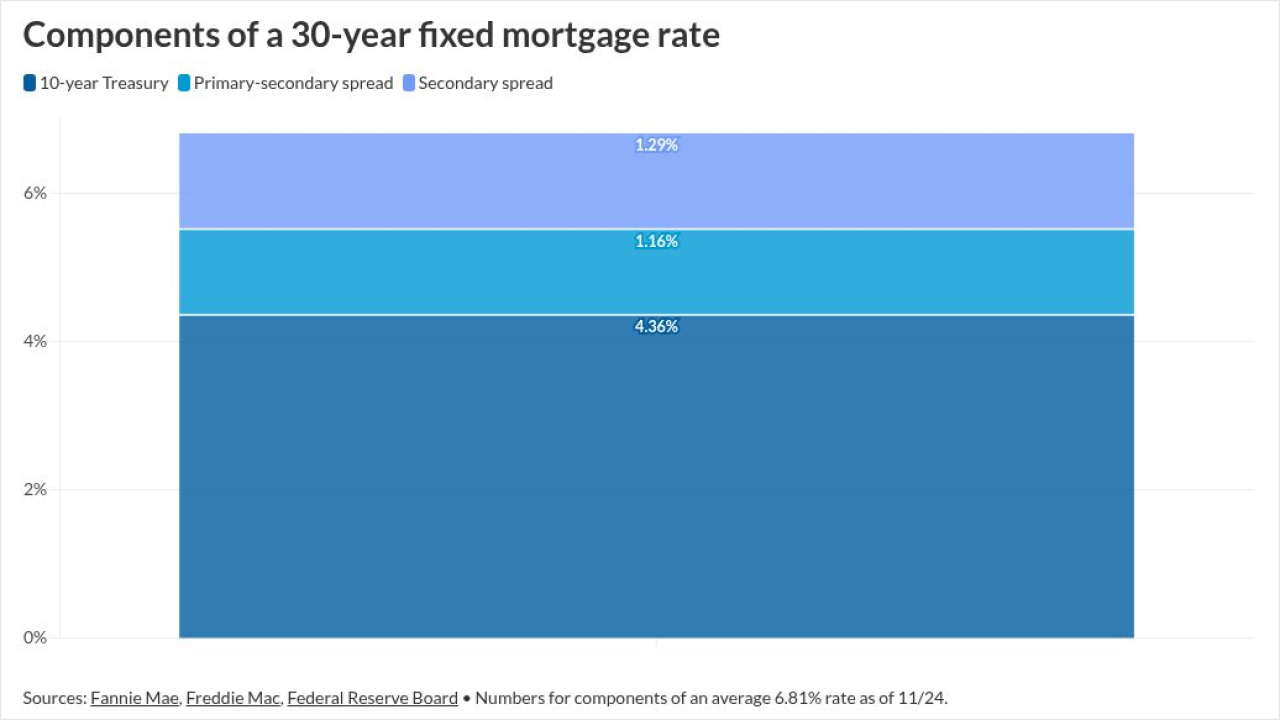As use of its syndicated loan trading platform accelerates, Octaura Holdings announced in mid-September that it launched an electronic platform offering three protocols to trade collateralized loan obligations (CLOs), a development that could encourage the systematic trading common in other financial markets.
The platform provides bilateral trading capabilities, enabling users to negotiate terms one-on-one with other market participants, mimicking how today's negotiations take place via telephone or chat services.
"Most people in this market have never traded electronically," said Brian Bejile, CEO of Octaura who co-founded the firm in 2022 and previously held leadership positions in Citi's CLO business. "We wanted a protocol that's intuitive and an elevated version of what they know."
Reviewing multiple offers
A second protocol enables buyside participants to send out requests for quotes (RFQs) on CLO bonds to multiple dealers and then trade them at the best price, while a third facilitates trading bids-wanted-in-competition (BWIC) lists of different CLO bonds. In each case, the platform dramatically shortens transaction time and provides sought after transaction "color" that helps market participants price upcoming BWICs.
"With Octaura, we can get the same or better results in 15 minutes compared to a BWIC process which [otherwise] can take one to three hours or more," said Bobby Hansen, managing director, GoldenTree Asset Management.
On Sept. 18, after the CLO platform's formal launch, Eagle Point Credit sold a $10.5 million BWIC across CLOs rated AAA, AA and A, to three separate dealers. Patricia Antonios, principal at the private-credit investment manager, said the platform provides a significantly more efficient way to run a BWIC for investment-grade CLO bonds, enabling sellers to easily upload securities lists and assign a due date and timeframe for dealers to submit bids. The platform displays bids sorted by level without requiring arduous manual entry from dealer emails, phone or chat.
"Then, by bond, we were able to directly counter on the platform, and seamlessly trade or pass—again, without having to phone or message," Antonios said.
On the dealer side, highly skilled traders and salespeople can focus on market analysis and advising clients rather than collecting and inputting data.
"They don't want those employees doing time consuming activities," Bejile said.
Octaura already offers the three trading protocols on the loan-trading platform, launched in 2023 with three sell-side participants and 34 buy-side investors. CLO platform participants also benefit from other loan-platform innovations, such as the Octaura Liquidity Score that gauges liquidity in loans and can indicate the distribution of bids on a loan put in a BWIC.
"A CLO manager thinking about liquidating a CLO in a redemption can see what bids are likely to be on the loan portfolio, and therefore its proceeds as an equity investor," Bejile said, noting that liquidity is a measure of a loan portfolio's quality. "With a less liquid portfolio, they may want to bid a bit wider."
An expanding platform
Octaura said in a June 9 announcement about raising $46.5 million that its roster of dealers had increased to 25, its buy-side participants to146, and its share of secondary loan-market trading to 4.6%. Just a couple months later, at the end of August, those numbers climbed to 27 dealers, 162 buy-side partners, and a trading volume averaged of 6.0%, Bejile said, adding that April 2, when President Trump announced a broad package of new import duties, provided a significant boost.
"Octaura became the go-to place for quick execution and very good pricing, and trading volume has remained elevated," he said.
Octaura received a round of funding in June from its founding investors, including Bank of America, Goldman Sachs, J.P. Morgan, Morgan Stanley, Wells Fargo and Moody's, as well as six new investors: Barclays, Deutsche Bank, BNP Paribas, Apollo, Motive Partners, OMERS Ventures, and MassMutual Ventures, an affiliate of CLO manager Barings.
Octaura became the go-to place for quick execution and very good pricing, and trading volume has remained elevated.
Bejile said the funding will support enhancing the loan and CLO platforms, including more trading protocols and improving connectivity, as well as building scale.
"We've gone from 0% of the loan market to 6% in relatively short order," he said. "Now how can we get to 20% in a responsible way?"
He added that Octaura also anticipates expanding the platform into other structured products such as asset-backed securities (ABS) and commercial mortgage-backed securities (CMBS).
"There's a lot of overlap in the workflow, the dealers, and the buyside participants in those markets," Bejile said. "So we're looking at how we can responsibly expand there."
Syndicated corporate loans and the CLOs that invest in them are among the few markets that are still conducted largely by phone and chat. The often-overlapping investors in Octaura and Versana, which focuses on digitizing the syndicated loan market, clearly see a bright future for digital platforms that integrate trading and data analysis.
Electronic trading has dramatically impacted the structure of other financial markets, including equities, exchange-traded derivatives, and fixed-income products such as high-yield bonds, enabling algorithmic, index-tracking and other transformational strategies, Bejile said, and the syndicated loan market could see similarly profound changes.
"Systematic trading has been the rage in equities and now in fixed-income products, but that couldn't exist in the syndicated loan markets because we didn't have electronic trading," Bejile said, adding that CLO ETFs have already seen rapid growth even before digitization of the CLO market. "ETFs get the low cost and trading friction they need from electronic trading. CLO ETFs have already grown substantially, so how much bigger can they get when participants can quickly get in and out of risk."





